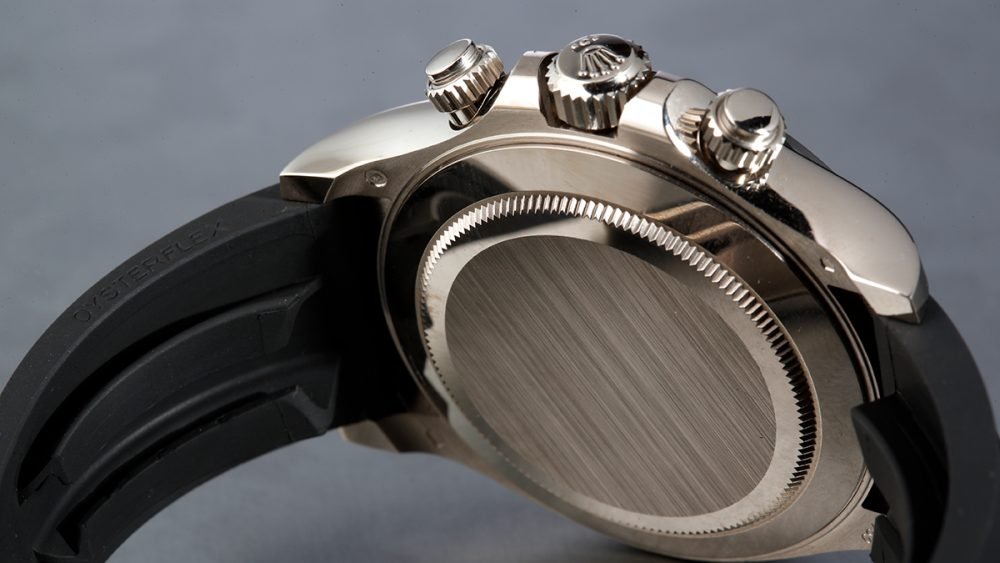Rolex only uses an 18ct gold alloy for their watches, regardless of whether it is yellow, rose, or white gold. This means the white gold comprises 750‰ (thousandths) of pure gold. To make white gold, Rolex adds silver to take the gold from its yellow to a white sheen. Rolex’s white gold alloy recipe consists of 75% gold, palladium, platinum, copper, and some silver and trace metals.
Rolex strives to make as much of the manufacturing process in-house as possible. To create the perfect gold with just the right properties, Rolex has its own foundry. The process of making white gold for Rolex watches involves melting noble metals at over 1,000° C in their foundry. After the alloy has melted, it is poured through a graphite sieve that creates droplets that are instantly cooled to become small beads as they fall into a vat of water.
Rolex melts the 18ct white gold beads for the second time and makes them into rods by pouring the mixture via continuous casting through a water-cooled die, causing the metal to solidify. The gold rods have now achieved a more appropriate shape, making them easier to work with in the workshops. Finally, they will be used to create watch cases, bracelets, and everything that is part of a white gold Rolex watch.
When it is time to create watches with the rods, Rolex uses intermittent annealing to make the shapes necessary for manufacturing. Polishing or satin-finishing gives the final product a beautiful and luxurious look.
Rolex’s white gold alloy has changed over the years. The white gold that Rolex uses today differs from the white gold used in the past. Earlier, white gold fluted bezels were rhodium-plated, meaning that the plating would show a yellowish hue underneath once the plating came off. But Rolex, as mentioned, does not rhodium-plate its watches anymore. According to Rolex, the white gold used today will not turn yellow.
In conclusion, Rolex’s white gold alloy uniquely blends gold, palladium, platinum, copper, silver, and trace metals. Rolex’s foundry and manufacturing process give them an advantage over many of their competitors, allowing them to create unique alloys with the perfect properties. Rolex’s white gold alloy recipe has changed over the years, but the white gold used today will not turn yellow, making it a durable and long-lasting material for luxury watches.

